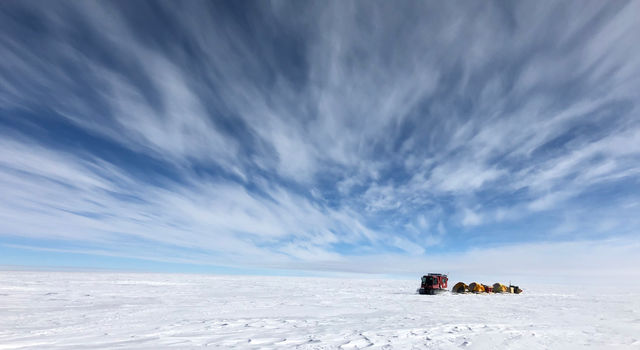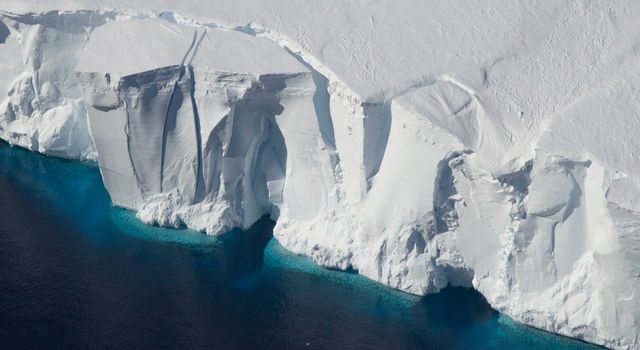Blogs | Earth Right Now | April 1, 2016
Sorrow and excitement
Hey, readers: Our team reads your comments. We share them at our meetings. Sometimes they make us laugh, or sigh, or even scratch our heads.
We see that you see us. Yay for connecting!
And this is how I know you’ve noticed NASA’s latest airborne campaign, where NASA scientists fly a bunch of NASA instruments on a NASA airplane to study more details about Earth. Cool, right?
Lately, we’ve been flying around the edge of Greenland collecting radar data about how much its glaciers are melting into the sea. And the most common comment we get goes something like “Wheee! Let’s go. Take me with you.” When I told a friend about the possibility of joining the team in the field, she exclaimed, “All expenses paid?”
HAHAHA … no. As if a NASA expedition to Greenland is like a resort vacation instead of a giant heaping pile of hard work.
“When I looked down at the rivers of ice running into the ocean, it was shocking to think about the effects of rising sea levels as far away as California or Antarctica,” said Principle Investigator Josh Willis, two days after returning from his first trip to observe this pristine part of our planet as it melts into the sea and goes bye-bye. “Yet, I had a blast.” Because even though we all probably have many complex emotions about climate change, ice mass loss and sea level rise, we can still simultaneously feel super duper stoked about the chance to fly over the glaciers of Greenland in a freaking NASA plane. “The mountains, the ice, the water and the ice in the water are incredibly striking even though it’s lonely to see it disappearing at the hands of human activity,” he told me.
Yes, emotions are weird, and yes, there’s an awkward contrast or odd juxtaposition between feeling both thrill and grief at the same time.
But that’s life, I guess.
So just in case you’re still envisioning a champagne-swilling, caviar-scoffing, gangsta, hip-hop music video scene, here are a few things that might surprise you about the kind of major effort it takes to get on board NASA’s G-III plane and join the Oceans Melting Greenland field campaign:
Kick booty in a fire-resistant flight suit

So, you think you’d kick some booty in one of these flight suits? Oh, yeah. Totally. Well, so do we. Would you kill to have one? But the real reason the pilots think they’re so fab is because they’re fire-resistant. They. Resist. Fire! With racks and racks of science equipment wired with electrical cables, the crew has to be extra careful about fire on the plane. So wearing one of these flight suits is required.
A load of gas and no mistakes

A trip to Greenland sounds all romantic ‘n’ stuff, but operating a science instrument aboard a flying science lab on a six-hour flight every day is hard work. Just check out these flight paths. According to Project Manager Steve Dinardo, “You get a full load of gas and no mistakes.” Notice the flight path zigzags across the complicated coastline of the entire island. That’s because global warming of Earth’s atmosphere is melting the top of the ice sheet. But, aha! The ocean water around Greenland is even warmer than the air. That warm water is busy melting the glaciers from around their edges, hence the name, Oceans Melting Greenland, which will find out exactly how much of this melting is going on.
Instruments, instruments and more instruments. And did I mention some serious training?

The NASA modified G-III aircraft is … modified. (Did you notice the word “modified”?) What modified means is the plane has holes in it so experimental science instruments can stick out. And more scientific instruments are attached in, under and onto the plane in all sorts of configurations. To get to fly on this baby, you’d better have some training. Yep, some serious training: Safety training, first aid training, survival training. You get the idea.
Keep warm, in style

I can work the runway like a glamazon in this red coat, but it’s rated for survival in 50 degrees below zero. I said survival. In case of emergency. Does this sound like your all-inclusive vacation package now? With a survival coat? And there’s a survival vest too, with a beacon attached, and food rations, a pocketknife tool set, fishing gear, first aid supplies, a radio and a laser pointer for playing with cats—oops, I mean for signaling emergency and attracting rescue. The thing weighs about 20 pounds. Everyone on the plane has one of these puppies, and you’d better believe they know how to use it. If there’s a problem, the team would have to survive three to five days out in the wilderness until they're rescued. I don’t mean to scare you, but at NASA, when we say we care about safety, we’re not messing around.
“It’s not a triumph of human achievement that we’re melting the ice sheet,” said Willis. “When you see how huge these glaciers are and this huge chunk of this ice sheet disappearing into the ocean, it’s almost incomprehensible even when you see it from 40,000 feet.”
Wheee.
Find out more about Oceans Melting Greenland here.
View and download an OMG poster/infographic here.
Thank you for your comments.
Laura
Oceans Melting Greenland is part of NASA Earth Expeditions, a six-month field research campaign to study regions of critical change around the world.
TAGS:GREENLAND, OCEANS, MELTING, GREENLAND, OMG







